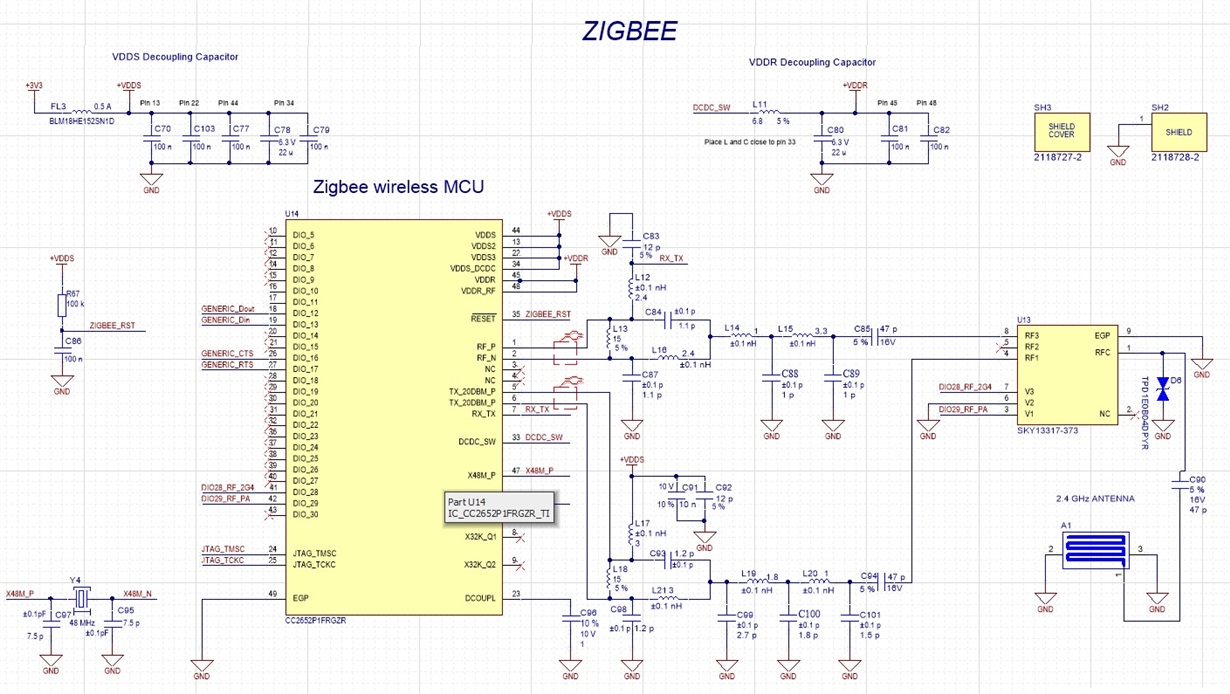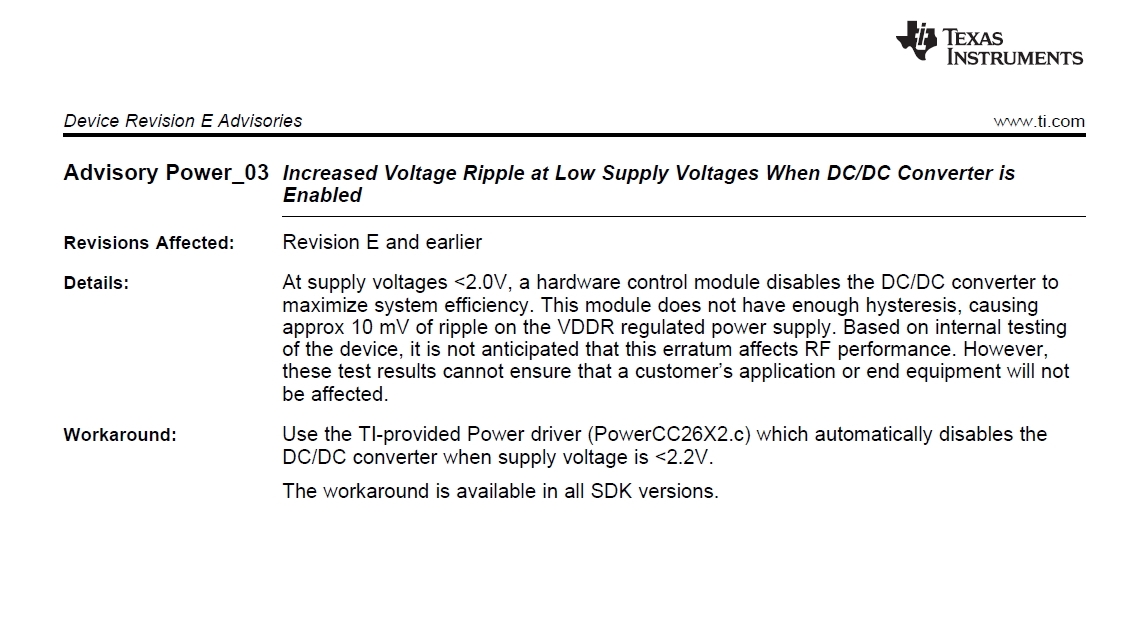Other Parts Discussed in Thread: LAUNCHXL-CC1352P, CC1352P
Hi!
6 months ago using TI LAUNCHXL-CC1352P design reference, we implement a CC2652P Zigbee transceiver on our IOT product. We have manufacture about 4 thousand units of it.
Last week, one of our client notify us about high temperature on the equipment, specifically in the area where the zigbee transceiver is located.
Checking all the units produced, I could see that between 10-15% of the units, there was an over consumption of 160-170 ma. If we take into account that the total consumption of the equipment in stand-by is 150 mA, we are talking about the equipment with problems doubling the normal consumption, very serious. This comsumtion is registered on the 12V power supply.
Investigating the equipment with overconsumption, I was able to verify that the problem is being generated in the Zigbee transceiver. (when we disable the module, or keep it reset, the overconsumption dissapear).
I couldn't find any problem in the PCB layout, nor in the component assembly. Perform the change of the IC CC2652P in 2 units with problems, and after the change they stopped presenting overconsumption.
Hardware Schematic
Firmware
The code that we are programming on the IC is the "znp_CC1352p_2_LAUNCHXL_tirtos_CCS" that comes with the CCS, we implment the configurations that you recommend on a previous thread for CC2652P
Let me know the additional information that I can provide.
Mauro.




